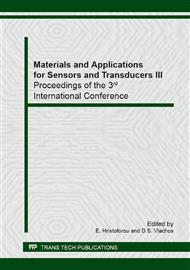p.177
p.181
p.185
p.189
p.194
p.198
p.202
p.207
p.211
Estimation of Depth of Concrete Column Members Using Impact Echo Method
Abstract:
In order to maintain the existing concrete structures in a safe and usable state, an overall maintenance management is necessary regarding structure aging from quality management of new construction. Thus, non-destructive testing is needed to estimate the structure damage, defect, or proper construction without damaging the structure. In U.S., there is a standard for non-destructive test (ACI 228.2R-98), and also in Japan, the non-destructive test method and compressive strength estimation manual was prepared by the Architectural Institute of Japan in 1983, and there are active researches in the ground field, but it lacks verification in architecture field. Thus, in this study, a technique that can estimate the depth of concrete column member using the Impact Echo method which is one of the non-destructive test methods shall be reviewed and evaluated for applicability to the architecture field. The specimen was mixed with design strength of 30MPa. The equipment used in testing is Freedom Date Pc Platform Win.TFS 2.5.2 by company Olson of U.S., and the experiment involved leveling the top surface of the concrete member, installing the equipment and applying impact 9 times, and taking the average of the reverberation values obtained. The estimated average depth of concrete column member using Impact Echo method was 304mm for IEC-300, 398mm for IEC-400, and 484mm for IEC-500, and the relative error rate compared to the actual size was 1%~3%. Through this study, the applicability of estimation of depth in concrete column members using impact echo method could be confirmed.
Info:
Periodical:
Pages:
194-197
Citation:
Online since:
April 2014
Authors:
Keywords:
Price:
Сopyright:
© 2014 Trans Tech Publications Ltd. All Rights Reserved
Share:
Citation:


